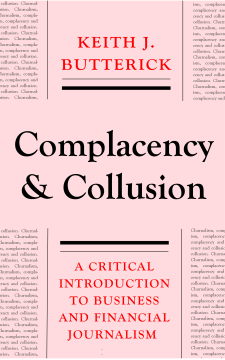
Additional Information
Book Details
Abstract
Complacency and Collusion focuses on the practice of financial and business journalism, giving compelling explanations for why big business needs the press and why the press needs big business.
The growing passivity and changing bias of Western journalists is widely acknowledged. Across the media, in newspapers, TV, media and the internet, journalism is increasingly hollowed out by writers who are no longer gathering news but rather churning out unsourced information, PR texts and online snippets. Behind this dubious practice is an increasingly invested corporate sector whose stake in the mainstream media as a mouthpiece has exponentially increased in the last few decades.
The book cuts through the misreporting that has occurred since the financial crisis and makes clear the inadequacies of articles in prestigious papers and magazines, such as the Economist and Financial Times. It reflects on what the growth and spread of complacent corporate journalism will mean for the future of a free media.
Table of Contents
| Section Title | Page | Action | Price |
|---|---|---|---|
| Cover | Cover | ||
| Contents | v | ||
| Introduction | vii | ||
| 1. The Origins of Business Reporting and Early Crises | 1 | ||
| 2. The Economist, The Times and Railway Mania | 18 | ||
| 3. New Journalism, the Daily Mail and Charles Duguid | 32 | ||
| 4. Harry Marks, Financial News and the Financial Times | 43 | ||
| 5. The Crash of 1929 and Keynes | 60 | ||
| 6. The Emergence of Modern Financial Journalism | 71 | ||
| 7. The 2008 Financial Crisis | 83 | ||
| 8. The Structure of Modern Financial and Business Journalism | 101 | ||
| 9. Ideology, Business Discourse, News Values | 120 | ||
| 10. Financial Communication and Financial PR | 137 | ||
| 11. Financial Journalism: Its Role in the Creation of Economic Paradigms | 156 | ||
| 12. The Future of Financial and Business Journalism | 172 | ||
| Notes | 182 | ||
| Bibliography | 189 | ||
| Index | 200 |
